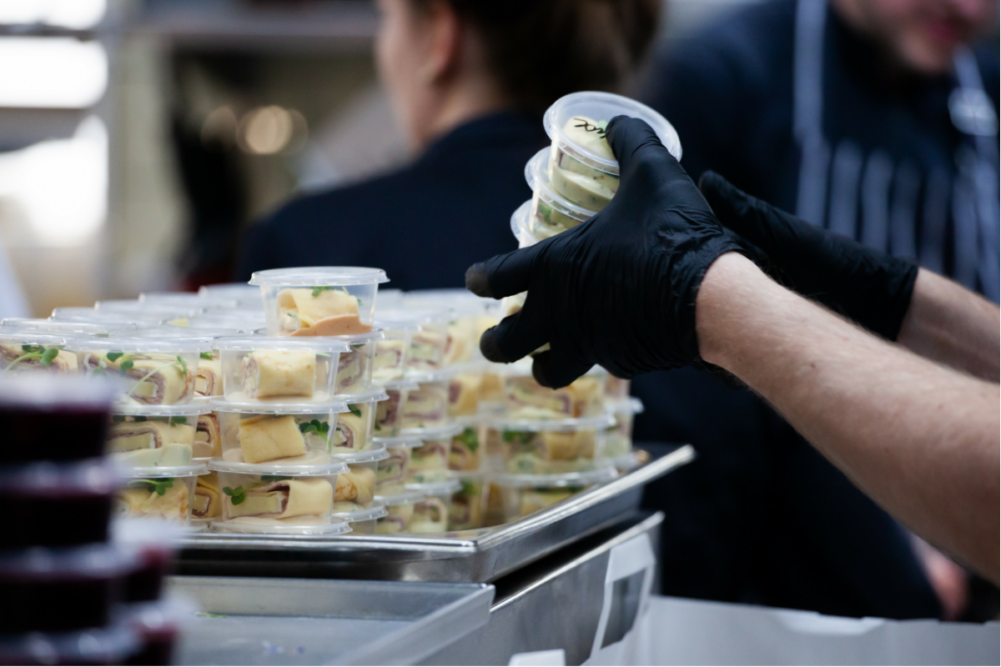 KANSAS CITY — The food delivery service DoorDash made a splash in late 2019 with the introduction of its first ghost kitchen in Redwood City, Calif. Nearly two years and one pandemic later, restaurant industry investment in off-premises concepts is accelerating and will create new opportunities and pressures for food and beverage product developers.
KANSAS CITY — The food delivery service DoorDash made a splash in late 2019 with the introduction of its first ghost kitchen in Redwood City, Calif. Nearly two years and one pandemic later, restaurant industry investment in off-premises concepts is accelerating and will create new opportunities and pressures for food and beverage product developers.
Research published by the National Restaurant Association (NRA) in 2019 found off-premises dining accounted for 60% of foodservice occasions, and nearly 80% of restaurant operators said developing an off-premises strategy was a priority. Then the COVID-19 pandemic hit, and what was a strategic priority became a necessity. Today, many operators are investing more resources in takeout/delivery capabilities than sit-down concepts.
Foodservice operators are taking notice. On Aug. 11, The Wendy’s Co. announced plans to open and operate 700 delivery kitchens over the next five years in the United States, Canada and the United Kingdom. Fifty kitchens are expected to be open this year, and the remainder will be open by 2025.
“This commitment builds on the successful test that we completed in Canada and will allow us to further develop urban markets where we are currently underpenetrated,” Todd Allan Penegor, president and chief executive officer of The Wendy’s Co., said during an Aug. 11 conference call to discuss second-quarter results. “We are still very early in our nontraditional development journey, but we are encouraged by the results that we’ve seen …”
The Wendy’s Co. expects the new kitchens to generate between $500,000 and $1 million in annual sales per unit.
As operators develop robust virtual, off-premises strategies, product developers also will have to adapt.
Red Robin Gourmet Burgers and Brews, Inc. launched three virtual brands this past March. The Wing Dept offers wings and sides; the Fresh Set menu features salads, wraps and sandwiches; and Chicken Sammy’s offers chicken-based sandwiches, tenders and sides.
“While still early, we are excited about the performance to date,” said Paul J. B. Murphy, president and CEO, during an Aug. 18 call to discuss second-quarter results. “So far, the data indicates approximately 70% of our virtual brand guests have never ordered online from Red Robin before, demonstrating that we are reaching and activating an entirely new audience through this channel.”
As some foodservice operators develop robust virtual, off-premises-centric strategies, food and beverage product developers also will have to adapt. Formulations capable of withstanding the rigors of takeout or delivery, for example, will be a priority.
Speed also will be critical. Virtual concepts allow operators to more quickly adjust or completely change menus to meet the needs of local consumers. Menu developers must be able to keep pace with such change and, in some cases, create the concepts that will drive change.
The NRA called 2020 a year unlike any other, and in 2021 foodservice trends are improving. In July, restaurant sales stood at $72.2 billion on a seasonally adjusted basis, according to data from the US Census Bureau. Of greater importance is July 2021 sales were 9.1% higher than February 2020 pre-pandemic sales. It appears the worst is behind the industry, but what lies ahead may be distinctly different, and product developers must prepare to embrace the changes ahead.





